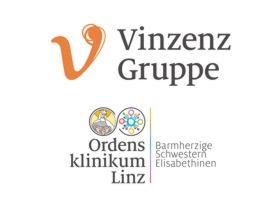Primavesi, Florian, Klieser, Eckhard, Cardini, Benno, Marsoner, Katharina, Fröschl, Uwe, Thalhammer, Sabine, Fischer, Ines, Hauer, Andreas, Urbas, Romana, Kiesslich, Tobias, Neureiter, Daniel, Zitt, Matthias, Klug, Reinhold, Wundsam, Helwig, Sellner, Franz, Karner, Josef, Függer, Reinhold, Cakar-Beck, Fergül, Kornprat, Peter, Öfner, Dietmar und Stättner, Stefan
(2019)
Exploring the surgical landscape of pancreatic neuroendocrine neoplasia in Austria: Results from the ASSO pNEN study group.
European journal of surgical oncology : the journal of the European Society of Surgical Oncology and the British Association of Surgical Oncology, 45 (2).
pp. 198-206.
ISSN 1532-2157
Für diesen Eintrag wurde kein Volltext-Dokument angefügt.
Kurzfassung
INTRODUCTION
Pancreatic neuroendocrine neoplasia (pNEN) show increasing incidence and management is complex due to biological heterogeneity. Most publications report isolated high-volume single-centre data. This Austrian multi-centre study on surgical management of pNENs provides a comprehensive real-life picture of quality indicators, recurrence-patterns, survival factors and systemic treatments.
METHODS
Retrospective, national cohort-study from 7 medium-/high-volume centres in Austria, coordinated under the auspices of the Austrian Society of Surgical Oncology (ASSO).
RESULTS
Two-hundred patients underwent resection for pNEN, 177 had non-functioning tumours and 31 showed stage 4 disease. Participating centres were responsible for 2/3 of pNEN resections in Austria within the last years. The mean rate of completeness of variables was 98.6%. Ninety-days mortality was 3.5%, overall rate of complications was 42.5%. Morbidity did not influence long-term survival. The 5-year overall-survival (OS) was 81.3%, 10-year-OS 52.5% and 5-year recurrence-free-survival (RFS) 69.8%. Recurrence was most common in the liver (68.1%). Four out of five patients with recurrence underwent further treatment, most commonly with medical therapy or chemotherapy. Multivariable analysis revealed grading (HR:2.7) and metastasis (HR:2.5) as significant factors for relapse. Tumours-size ≥2 cm (HR:5.9), age ≥60 years (HR:3.1), metastasis (HR:2.3) and grading (HR:2.0) were associated with OS. Tumours <2 cm showed 93.9% 10-year-OS, but 33% had G2/G3 grading, 12.5% positive lymph-nodes and 4.7% metastasis at diagnosis, each associated with significant worse survival.
CONCLUSION
Resection of pNENs in Austria is performed with internationally comparable safety. Analysed factors allow for risk-stratification in clinical treatment and future prospective trials. A watch-and-wait strategy purely based on tumour-size cannot be recommended.
Actions (login required)

- Eintrag anzeigen


 Tools
Tools Tools
Tools